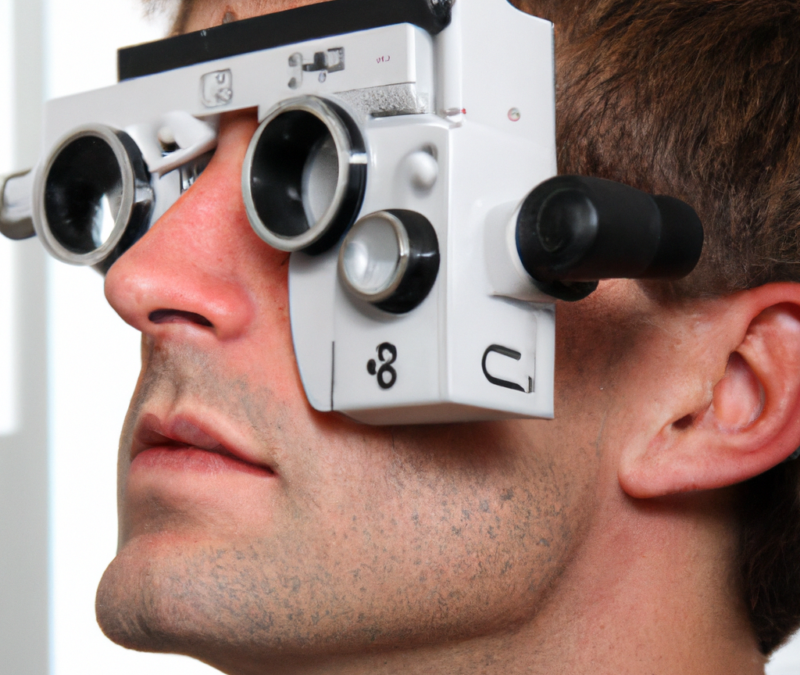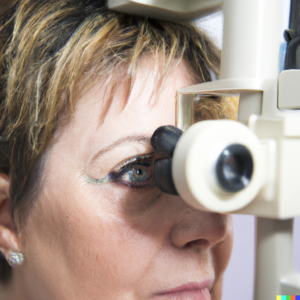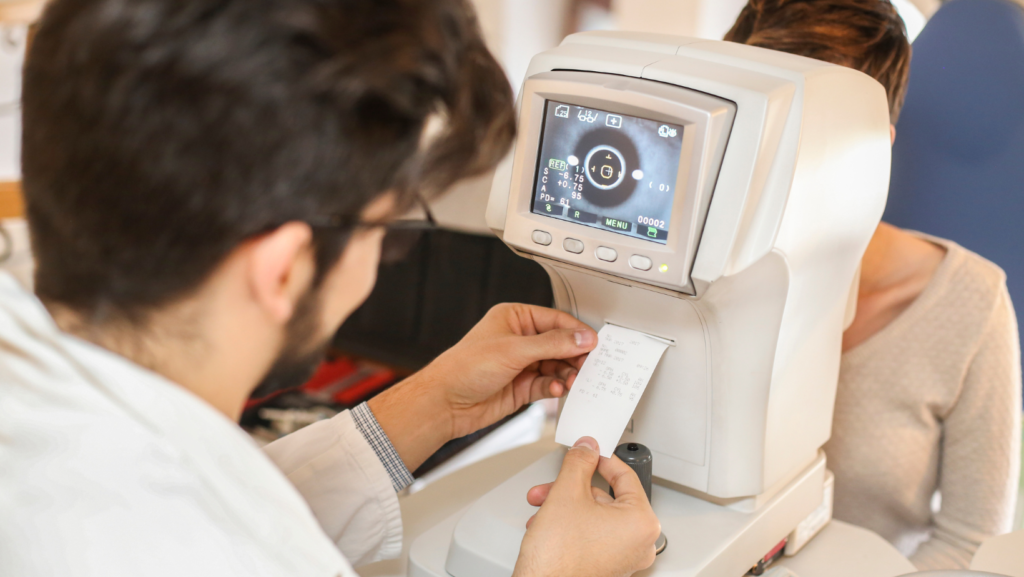
What are Cataracts?
Cataracts are a common eye condition that occurs when the natural lens in the eye becomes cloudy or opaque. The lens is a clear structure located behind the iris (the coloured part of the eye) that helps to focus light onto the retina at the back of the eye. When the lens becomes cloudy, it can interfere with the passage of light through the eye, leading to vision problems.
Cataracts can occur in one or both eyes and can develop slowly over time or progress rapidly. They are most commonly associated with ageing, but can also be caused by other factors such as injury, genetics, or medical conditions such as diabetes.
Types of Cataracts
There are three primary types of cataracts, which include:
Nuclear Cataracts
Nuclear cataracts develop in the centre (nucleus) of the eye’s natural lens, which lies behind the iris and the pupil. This type is typically associated with ageing and is the most common form of cataract.
Nuclear cataracts develop when the proteins in the eye’s lens begin to clump together and cause the lens to become less transparent. This clumping can cause the lens to turn yellow or brown, leading to blurred vision, difficulty seeing at night, and reduced colour perception.
The symptoms of nuclear cataracts can develop gradually and may not be noticeable in the early stages. However, as it progresses, you may experience blurred or hazy vision, increased sensitivity to glare, and a decreased ability to see colours. You may also require frequent changes to your eyeglass prescription.
Cortical Cataracts
Cortical cataracts develop in the outer portion of the eye’s natural lens, called the cortex. The cortex is made up of layers of fibres that surround the nucleus, or central portion, of the lens.
Cortical cataracts develop when the fibres in the cortex begin to break down and form wedge-shaped opacities, or cloudy areas, in the lens. These opacities can grow larger and more numerous over time, leading to visual disturbances and decreased vision.
The symptoms of cortical cataracts can include blurry or distorted vision, difficulty with glare, and a reduction in colour perception. Some people may also experience double vision or the sensation of halos around lights.
Subcapsular Cataracts
Subcapsular cataracts develop on the back surface of the eye’s natural lens, just underneath the lens capsule. The lens capsule is a clear, outer membrane that surrounds the lens and holds it in place.
Subcapsular cataracts can develop quickly and progress rapidly, causing significant visual disturbances. This type of cataract can be further categorized into two subtypes: posterior subcapsular cataracts and anterior subcapsular cataracts:
- Posterior subcapsular cataracts develop at the back of the lens capsule and can cause blurry or distorted vision, especially when looking at bright lights. People with this type may also experience difficulty seeing in low-light conditions, such as when driving at night.
- Anterior subcapsular cataracts develop at the front of the lens capsule and can cause glare, halos, and reduced colour perception. This type is often associated with certain medical conditions, such as diabetes or chronic steroid use.
Causes of Cataracts
While the exact cause is unknown, several factors can increase the likelihood of developing this condition. These factors include:
- Ageing: Cataracts are more common in older adults, with the majority of cases occurring in people over 60 years old.
- Family History: If you have a family history of cataracts, you are more likely to develop them.
- Medical Conditions: Certain medical conditions like diabetes, high blood pressure, and obesity can increase your risk of developing cataracts.
- Lifestyle Factors: Poor diet, smoking, excessive alcohol consumption, and prolonged exposure to sunlight can also increase your risk of developing cataracts.
It is important to note that while some risk factors for cataracts cannot be controlled, such as age and genetics, there are lifestyle changes that can help reduce the risk of cataract development, such as wearing UV-protective eyewear and quitting smoking. Regular eye exams can also help with early detection and treatment.

Symptoms of Cataracts
Cataracts can develop slowly over time and may not present any noticeable symptoms initially. As they progress, however, you may experience:
- Blurry or Hazy Vision: You may find it difficult to see objects clearly, especially in bright light.
- Reduced Color Perception: Colors may appear less vibrant or have a yellowish tint.
- Double Vision: You may see double images of objects.
- Glare and Halos: You may experience glare or halos around light sources.
- Frequent Prescription Changes: You may need to update your glasses or contact lens prescription more frequently.
Cataracts can develop slowly over time, and the symptoms may not be noticeable at first. Regular eye exams with an optometrist can help with early detection and treatment, even before symptoms develop. If you are experiencing any changes in your vision, it is important to schedule an appointment with your optometrist for a comprehensive eye exam.
If you are experiencing any of these symptoms, book an appointment with us today.
How to Prevent Cataracts
While there is no guaranteed way to prevent cataracts, you can reduce your risk by following these steps:
- Protect Your Eyes from UV Rays: Wear sunglasses that offer 100% UV protection, especially when you are outdoors.
- Quit Smoking: Smoking can increase your risk of developing cataracts and other eye diseases.
- Manage Your Health: Manage any underlying medical conditions like diabetes, high blood pressure, and obesity that can increase your risk of developing cataracts.
- Eat a Healthy Diet: Incorporate foods rich in antioxidants like vitamins C and E, beta-carotene, and lutein, like leafy greens, fruits, and vegetables.
- Get Regular Eye Exams: Regular eye exams can help detect and treat any eye conditions early.
How to Treat Cataracts
When cataracts start to affect your quality of life, your optometrist may recommend surgery. Cataract surgery is a common procedure and involves removing the cloudy lens and replacing it with an artificial lens. This procedure typically takes less than an hour and is performed under local anaesthesia. The artificial lens used in the procedure can be tailored to your individual needs, and you can usually resume your daily activities within a few days.
In conclusion, if you are experiencing any of the symptoms of cataracts or have any concerns about your eye health, it is essential to schedule an appointment with your optometrist. They can diagnose and treat any eye conditions early, leading to better outcomes and a higher quality of life. By following the steps to prevent cataracts, you can reduce your risk of developing this condition and maintain healthy eyes for years to come. If you would like to learn more about cataracts, please contact us or visit the NHS website.


